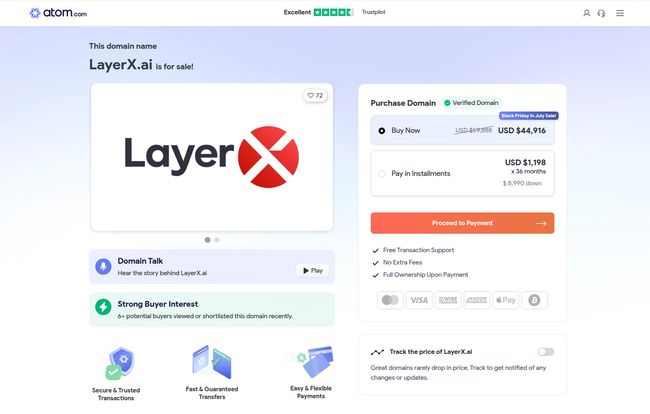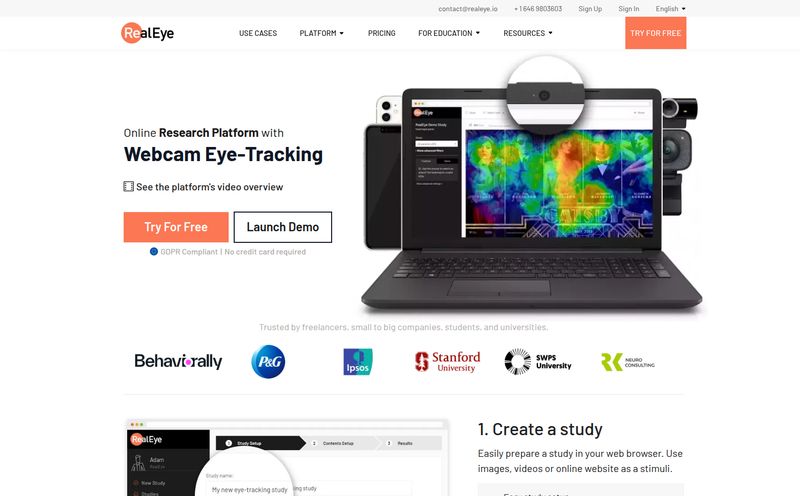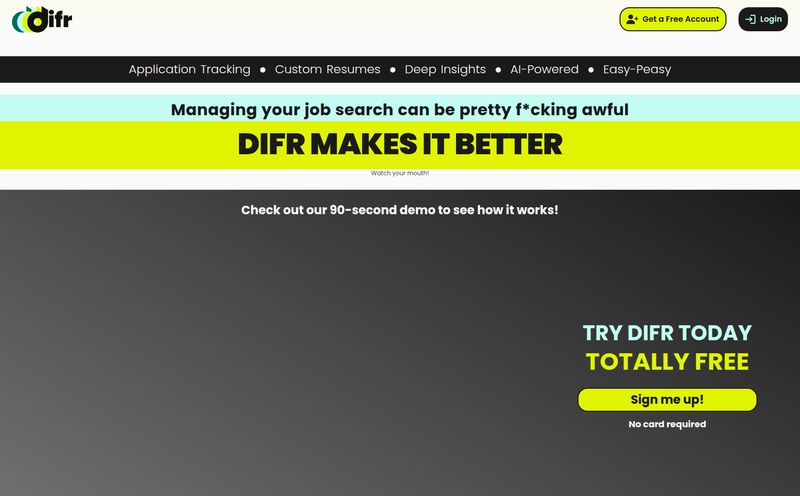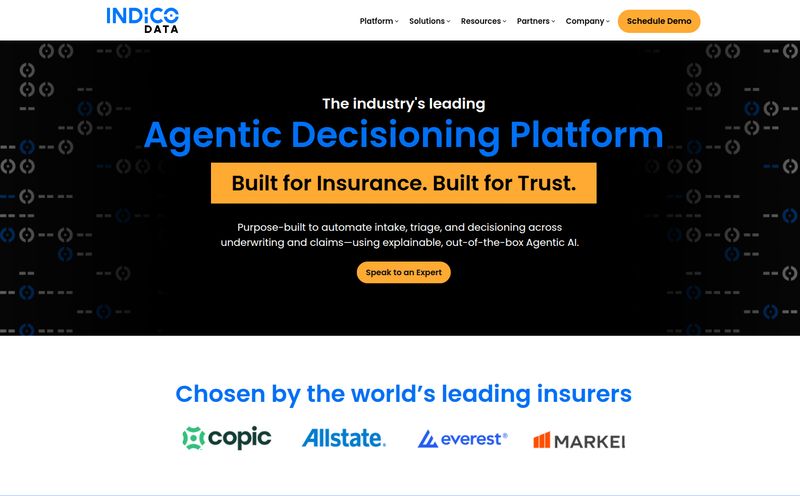If you've spent any time in the trenches of machine learning, especially computer vision, you know the real bottleneck isn't always the algorithm. Oh no. It's the data. It's the absolute, unadulterated chaos of managing thousands, sometimes millions, of images and video files. It's a digital hoarder's nightmare—versions scattered across drives, annotations in a dozen different formats, and metadata that's more of a vague suggestion than a record.
Honestly, it feels like trying to build a Ferrari in a garage that's been hit by a tornado. You know the parts are in there... somewhere. That's the problem that a platform called LayerNext promised to solve. It popped onto my radar as this end-to-end AI data management solution designed specifically for us, the CV crowd. It sounded like the professional organizer we all desperately needed.
But here’s the weird part. When I went to check it out recently, I hit a wall. A digital dead end. And that's when this review turned into something of an investigation. So, grab a coffee. Let’s talk about the promise, the platform, and the perplexing mystery of LayerNext.

Visit LayerNext
Why Computer Vision Data is Such a Headache
Before we get into what LayerNext was supposed to be, let's just sit with the problem for a second. It’s not just about storage. It's a whole ecosystem of pain. You've got your raw data—the pristine, untouched videos and images. Then you have the metadata. Then come the labels and annotations, which are a world of complexity on their own. Bounding boxes, polygons, semantic segmentation masks... it's a lot.
Then you need to version everything. Not just your code, but your datasets. Ever train a model for 12 hours only to realize you used a dataset from two weeks ago, before the critical labeling corrections were made? Yeah. Me too. It’s a feeling I wouldn’t wish on my worst enemy. This entire process, often called MLOps, is where so many ambitious AI projects slow to a crawl.
The Blueprint for a Perfect AI Workflow
LayerNext's blueprint, from what I could gather, was designed to tackle this mess head-on. It wasn't just another annotation tool or a glorified file storage system. It aimed to be the central nervous system for a computer vision team.
A Unified Home for All Your Data
The core idea was a centralized DataLake. One place for everything: raw data, metadata, labels, even your model runs and predictions. This alone is a massive step up from juggling S3 buckets, local drives, and a half-dozen other services. It creates a single source of truth, which is the holy grail in data management. No more asking, "Hey, does anyone have the link to teh final dataset for the client demo?"
An End-to-End Production Line
The platform seemed to cover the entire lifecycle. You could Explore your raw data to see what you even have. You could then Organize it, curating massive, unstructured piles of images into clean, usable subsets. From there, you could send it to their integrated Annotation Studio to get it labeled at scale. Finally, their Analyze features were meant to help you understand how effective your training data was and debug errors. It's the data-centric AI approach we're all talking about, seemingly bundled into one product.
And for integration, they offered an SDK and API. This is crucial. No tool exists in a vacuum. The ability to programmatically connect your own applications, scripts, and models is what separates a nice-to-have gadget from a truly foundational piece of infrastructure.
Security and Control by Default
Here’s something that really caught my eye: LayerNext was designed to be self-hosted by default. In an era where everyone is pushing you onto their cloud, this is a bold and, in my opinion, fantastic choice. For anyone working with sensitive data—think medical imagery (HIPAA), facial recognition, or proprietary industrial data—keeping your data within your own infrastructure isn't just a preference; it's a requirement. This approach gives you full control over your data, helping you stay compliant with regulations like GDPR without having to trust a third-party's security promises.
The Promise and The Problem
On paper, LayerNext looked incredible. It promised an end-to-end, unified, secure, and flexible platform that could dramatically boost an AI team's productivity. They even mentioned a Community version, which is always a great sign that a company wants to support the broader ecosystem.
So, what's the problem? Well, it seems to have… disappeared.
My investigation led me to a few strange clues. The domain LayerX.ai (note the 'X' not 'Next') is currently up for sale. And it's not cheap. At the time of writing, it’s listed for a cool $44,916. That's not the kind of thing you see from a thriving tech company. Further digging led to dead links and a general lack of presence. No recent announcements, no active community forum, nothing. A real shame.
It's the classic startup story, perhaps. A brilliant idea that, for whatever reason—funding, acquisition, a pivot—never reached its full potential or just faded away. It's a ghost in the machine.
What To Use in a Post-LayerNext World
So, you can't get LayerNext. But the problems it tried to solve are more relevant than ever. If you're looking for a robust platform to manage your computer vision data, don't despair. The space has matured, and there are some fantastic, and very much existing, alternatives out there.
Here’s a quick rundown of some platforms that tackle similar problems:
| Platform | What It's Good For |
|---|---|
| V7 Labs | An excellent all-in-one platform with very powerful automated labeling and workflow tools. Great for complex annotation tasks. |
| Labelbox | One of the pioneers in this space. It’s a very mature platform for data labeling, cataloging, and model diagnostics. |
| Scale AI | If you need a massive amount of high-quality labeled data and have the budget, Scale is an industry leader, combining their platform with a human workforce. |
| CVAT / DVC (Open Source) | For teams that want maximum control and have the technical chops, combining open-source tools like CVAT for annotation and DVC for data versioning can be a powerful, self-hosted solution. |
"The best tool is the one that actually exists and gets the job done," as a wise engineer once told me over lukewarm conference coffee. While LayerNext was a beautiful dream, these alternatives are real and can help you tame your data chaos today.
Frequently Asked Questions
- What was LayerNext supposed to be?
- LayerNext was designed as an end-to-end data management platform for computer vision. It aimed to provide a unified infrastructure to handle everything from data storage and annotation to dataset versioning and analysis.
- Was LayerNext a self-hosted platform?
- Yes, one of its key features was that it was self-hosted by default. This was a major selling point for teams with high security or data privacy needs, as it allowed them to keep all their data within their own infrastructure.
- Is LayerNext still available to use?
- All signs point to no. The likely domain is up for sale, and there is no active website or public presence for the company. It appears to be a defunct project.
- Why is computer vision data management so complicated?
- It's complicated due to the sheer volume and variety of data. You have large image/video files, complex annotations (labels), metadata, and the need to version everything perfectly to ensure reproducible model training. Managing this entire pipeline across a team is a significant operational challenge.
- What are some good alternatives to LayerNext?
- There are several great alternatives. For comprehensive commercial platforms, check out V7 Labs, Labelbox, or Scale AI. For a more hands-on, open-source approach, you can combine tools like CVAT and DVC.
- How much was the LayerX.ai domain selling for?
- At the time of this writing, the domain
LayerX.aiwas listed for sale on Atom.com for $44,916.
Final Thoughts
The story of LayerNext is a bit of a cautionary tale. It represents a perfect idea—a single, elegant solution to the messy, sprawling problem of computer vision data. It’s a reminder that a great blueprint and a real, sustainable product are two different things. The tech world is littered with ghosts of brilliant ideas.
But it's also a hopeful story. The fact that tools like this are being conceived shows how much our industry is maturing. We've moved past just building models and are now focusing on the hard, essential work of building the foundations they stand on. While you can't use LayerNext, you can and should embrace its philosophy. Get your data in order. Because at the end of the day, that's where the real magic happens.
Reference and Sources
- V7 Labs: https://www.v7labs.com/
- Labelbox: https://labelbox.com/
- Scale AI: https://scale.com/
- CVAT (Computer Vision Annotation Tool): https://github.com/cvat-ai/cvat
- DVC (Data Version Control): https://dvc.org/



